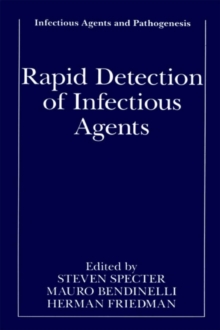
Enteric Infections and Immunity PDF
Edited by Lois J. Paradise, Mauro Bendinelli, Herman Friedman
Part of the Infectious Agents and Pathogenesis series
Description
As we approach the end of this millennium, enteric diseases remain impor- tant public health problems.
In many parts of the world, sanitary measures have advanced little over the last century, although some of the governments in those areas are striving to improve facilities for sanitation and to educate their people in proper handling of food, water, sewage, and other modes of transmission of pathogenic microbes.
Even in highly developed countries, outbreaks of diarrheal diseases occur today.
Globally, the annual morbidity from enteric infections is estimated at several billion and deaths at several million per year.
In this volume, descriptions of some of these diseases, of immunity that results from them, of clinical studies that promote under- standing of individual and community immunity, of molecular factors of pathogenesis, and/or of advances in vaccine development have been pro- vided by leading researchers.
At present, the application of molecular methods is enhancing the identification of protective antigens of many microorganisms.
In addition, new methods for design and delivery of vac- cines are being devised.
Perhaps then more effective tools for reducing at least some of these diseases will be available within the next decade.
Lois J. Paradise Herman Friedman Mauro Bendinelli vii Contents Introduction . . . . . . . . . . . . . . . . . . . . . . . . . . . . . . . . . . . . . . . . . . . . xv LOIS J. PARADISE 1. Indigenous Microorganisms as a Host Defense 1 KENNETH H.
WILSON 1. Introduction . . . . . . . . . . . . . . . . . . . . . . . . . . . . . . . . . . . . . . . . 1 2. Composition of Intestinal Biota. . . . . . . . . . . . . . . . . . . . . . . . 2 3. Molecular Approaches to Determine Composition of the Biota . . . . . . . . . . . . . . . . . . . .. . . . . . . . . . . . . . . . . . . . . . . 3 4. Role of the Host in Determining the Composition of the Biota . . . . . . . . . . . . . . . . . . . . . . . . . . . . . . . . . . . . . . . . . . .
Information
-
Download - Immediately Available
- Format:PDF
- Publisher:Springer US
- Publication Date:22/11/2013
- Category:
- ISBN:9781489903136
Information
-
Download - Immediately Available
- Format:PDF
- Publisher:Springer US
- Publication Date:22/11/2013
- Category:
- ISBN:9781489903136










